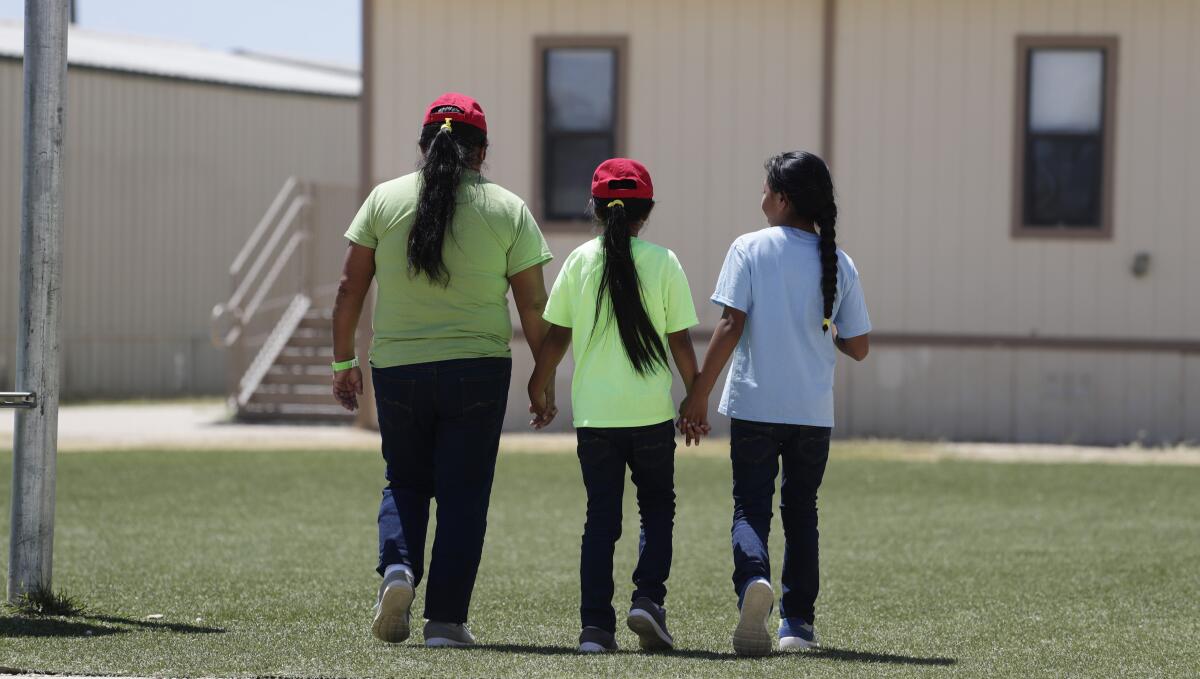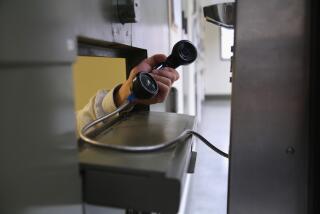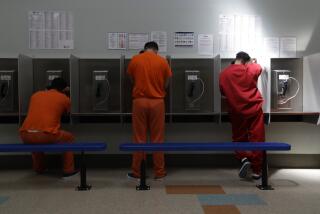Coronavirus cases jump 340% among ICE detainees in one week

- Share via
An estimated 1,254 people currently held in U.S. immigration detention centers have tested positive for the coronavirus, according to the most recent federal data, more than four times the number recorded a week earlier.
The Department of Homeland Security’s Immigration and Customs Enforcement is currently holding 22,142 people in custody. On Jan. 3, 285 were in isolation or being monitored after testing positive for the virus.
That number has increased by 340% as of Tuesday, with significant outbreaks at family residential centers in Texas and Arizona, according to the ICE website. Currently, the largest recorded outbreak is at the Karnes County Residential Center in Karnes City, Texas, where 135 people are listed as having tested positive. There are also 95 confirmed cases at the La Palma Correctional Facility in Eloy, Arizona, and 50 cases at the South Texas Family Residential Center.
Representatives for ICE didn’t respond to a request for comment.
Researchers who in 2020 used ICE detainee population data to model virus transmission rates within 111 ICE detention facilities found that 72% of detainees are expected to be infected within three months under optimistic circumstances once the coronavirus enters a facility. But more dire estimates, based on higher transmissibility, predicted that the entire detainee population would be infected within the same three-month period.
It was impossible to maintain any kind of social distance and there was no way to protect oneself from COVID-19.
The Centers for Disease Control and Prevention has said that the Omicron variant, which is dominant in the U.S., is more contagious than the original SARS-CoV-2 virus. It is not clear what percentage of current cases in ICE detention centers are driven by Omicron.
More to Read
Sign up for Essential California
The most important California stories and recommendations in your inbox every morning.
You may occasionally receive promotional content from the Los Angeles Times.










